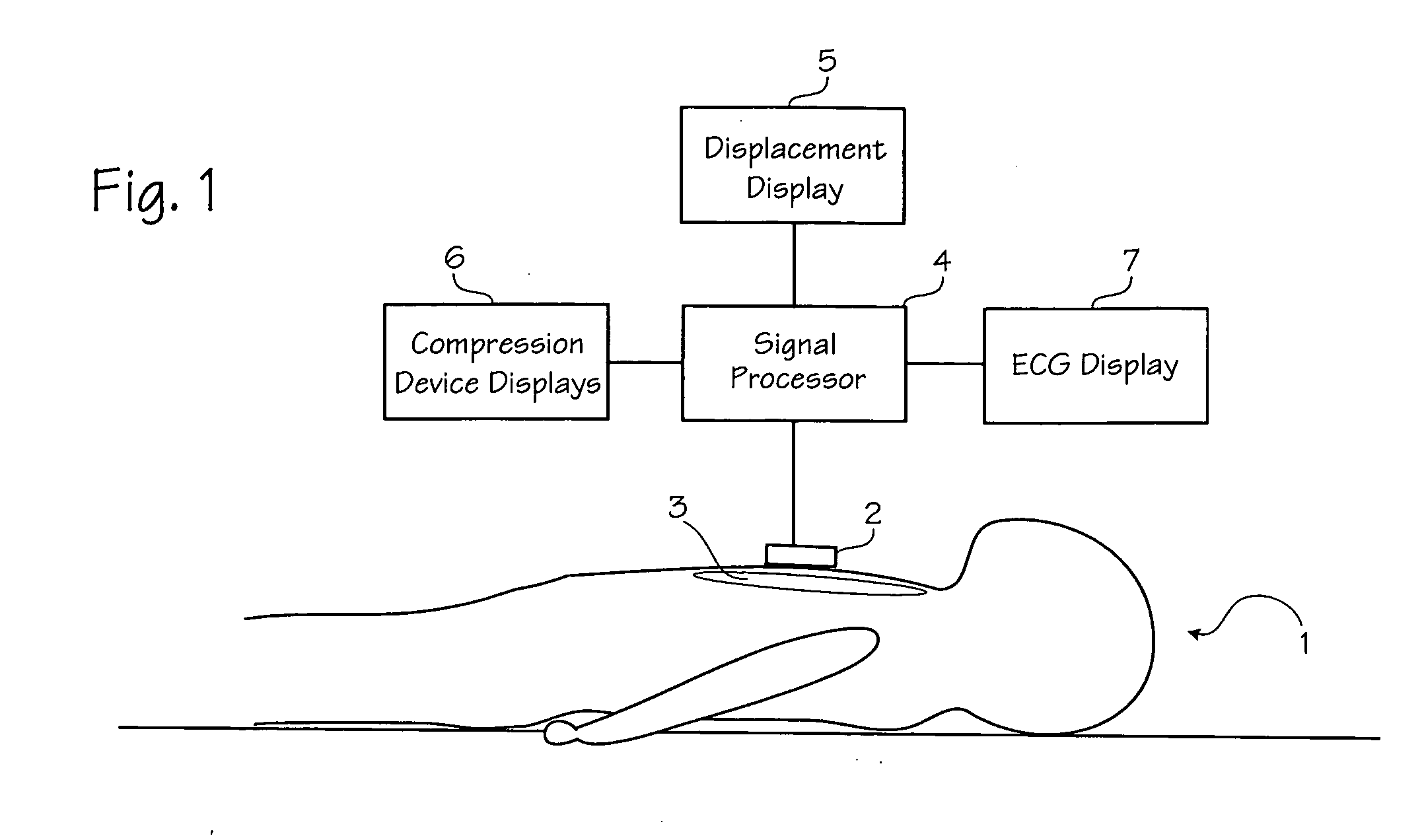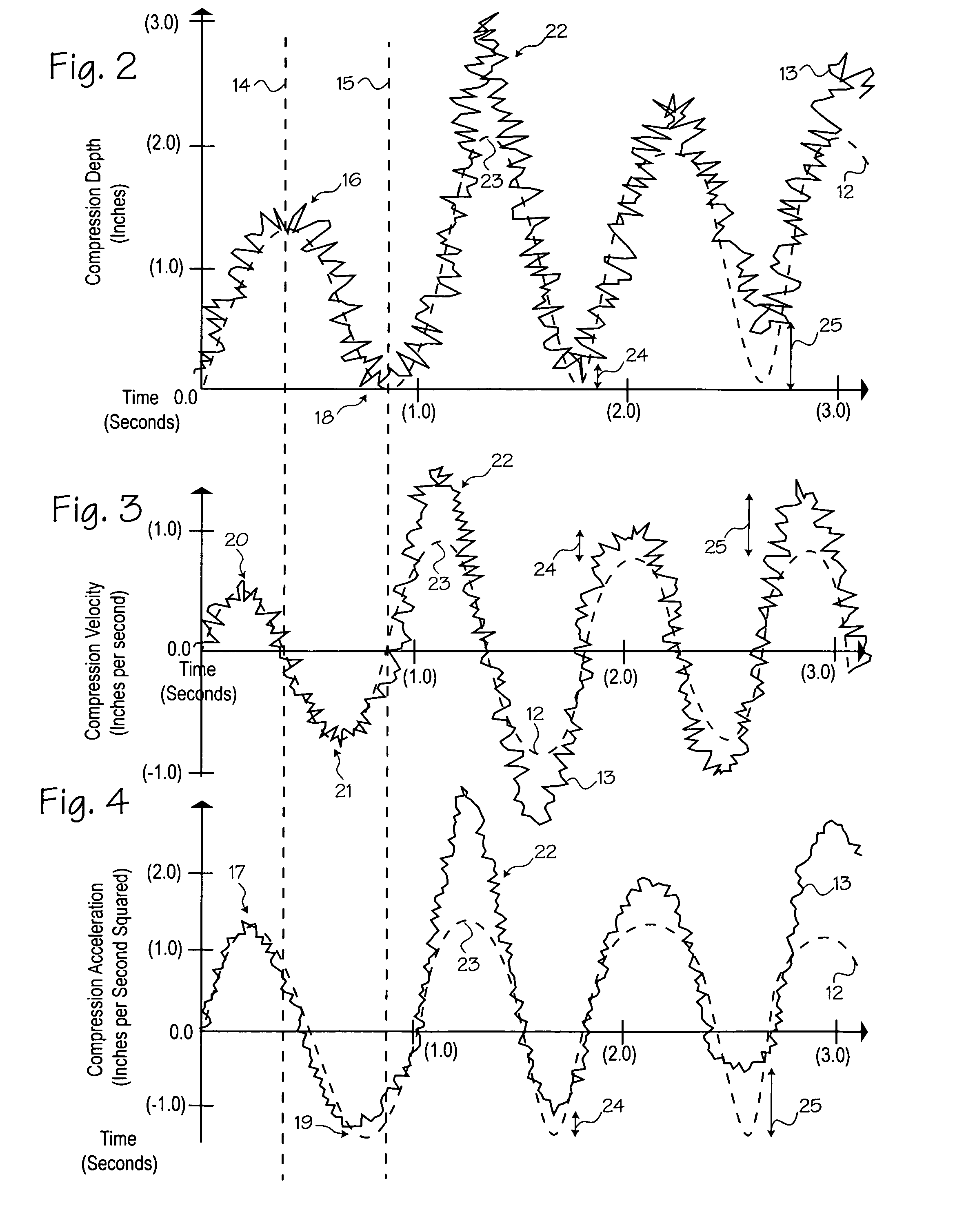Method of estimating the actual ECG of a patient during CPR
a technology of actual ecg and cpr, which is applied in the field of cardiac pulmonary resuscitation (cpr), can solve the problems of difficult physical and emotional challenges of cpr, the rescuer is imprecisely judging the timing and depth of compression, and the manual chest compression rarely meets the guidelines
- Summary
- Abstract
- Description
- Claims
- Application Information
AI Technical Summary
Benefits of technology
Problems solved by technology
Method used
Image
Examples
Embodiment Construction
[0054] FIG. 1 shows a patient 1 and an accelerometer-based compression monitor 2 in place on the patient. An accelerometer-based compression monitor uses one or more accelerometers to determine the depth of compressions. An example of an accelerometer-based compression monitor may be found in our own patent, Halperin et al., CPR Chest Compression Monitor, U.S. Pat. No. 6,390,996 (May 21, 2002), which is hereby incorporated by reference in its entirety. The compression monitor 2 is placed on the sternum 3 of the patient 1, on the rescuer's hands or arms, or on an automatic CPR device. The chest is then compressed. The accelerometer measures the acceleration of compressions and a processor 4 estimates the actual displacement of the accelerometer based on the measured acceleration. The signal processing techniques described below ensure that the estimated actual displacement is accurate and precise.
[0055] The estimated actual displacement may be provided to a displacement display 5 tha...
PUM
 Login to View More
Login to View More Abstract
Description
Claims
Application Information
 Login to View More
Login to View More - R&D
- Intellectual Property
- Life Sciences
- Materials
- Tech Scout
- Unparalleled Data Quality
- Higher Quality Content
- 60% Fewer Hallucinations
Browse by: Latest US Patents, China's latest patents, Technical Efficacy Thesaurus, Application Domain, Technology Topic, Popular Technical Reports.
© 2025 PatSnap. All rights reserved.Legal|Privacy policy|Modern Slavery Act Transparency Statement|Sitemap|About US| Contact US: help@patsnap.com



